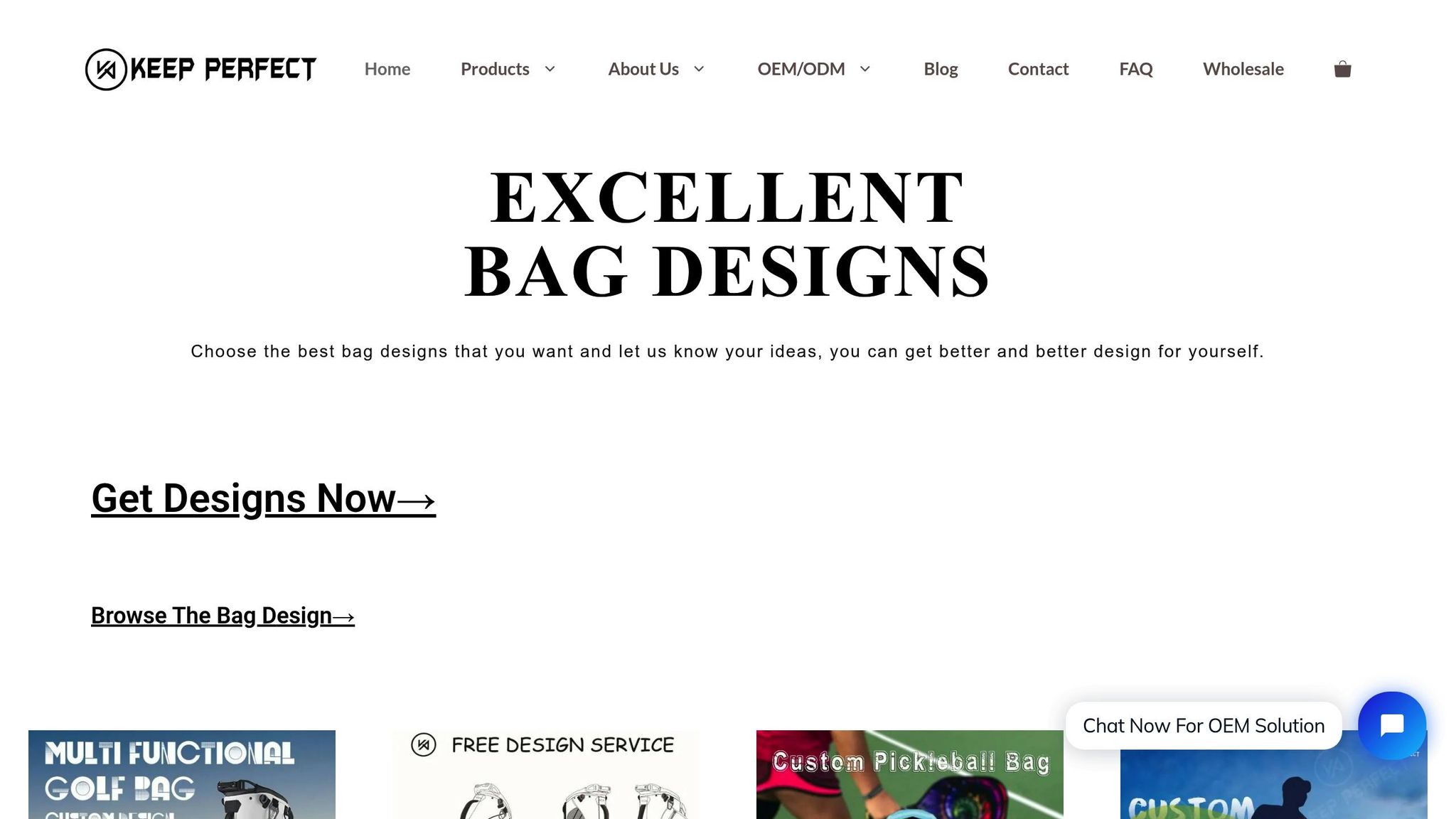Looking for a durable sports bag? Here’s the quick answer: PU leather is best for structured, sleek designs like golf bags, while nylon excels in lightweight, rugged outdoor use, such as gym or team sports bags. Both materials have unique strengths and weaknesses, so choosing the right one depends on your specific needs.
Key Differences:
- PU Leather: Durable, water-resistant, holds shape, heavier, great for indoor use.
- Nylon: Lightweight, tear-resistant, flexible, ideal for outdoor and rough use.
Quick Comparison:
| Feature | PU Leather | Nylon |
|---|---|---|
| Durability | Scratch-resistant | Tear-resistant |
| Water Resistance | Non-porous surface | Hydrophobic coating |
| Weight | Heavier | Lightweight |
| Flexibility | Stiff, shape-retentive | Flexible, needs support |
| UV Resistance | May fade over time | Retains color, slight strength loss |
| Care | Wipe clean with damp cloth | Machine washable, air-dry |
| Best Use | Indoor, structured bags | Outdoor, rugged use |
Need more details? Read on to learn how each material performs in durability tests, cleaning, and care.
Material Properties
How These Materials Are Made
PU leather is created by applying a polyurethane layer over a polyester or cotton base. This method results in a sturdy material with water-resistant qualities.
Nylon is produced by combining diamine and dicarboxylic acid, forming polymer chains that are turned into fibers and woven into a tough fabric. After production, both materials are thoroughly tested for durability.
Material Strength Testing
Once manufactured, both PU leather and nylon are put through strict testing. Important factors like tensile strength, tear resistance, and abrasion resistance are measured to ensure durability.
Water and Stain Protection
The surface of PU leather is non-porous, which helps repel water and makes cleaning easier. Nylon, when treated with a hydrophobic coating, offers similar water resistance while still allowing airflow.
Weight and Flexibility Differences
PU leather tends to maintain its shape but adds extra weight, making it heavier. Nylon, on the other hand, is lightweight, making it a great choice for larger bags. The flexibility of PU leather can be adjusted during production to strike the right balance between stiffness and pliability.
Durability Test Results
Scratch and Wear Tests
PU leather holds up well against surface scratches thanks to its polyurethane coating. On the other hand, nylon naturally resists tearing and punctures by evenly distributing stress across its fibers. These differences become even more apparent under UV exposure.
Sun Exposure Effects
Exposure to ultraviolet light affects these materials in distinct ways. PU leather may experience some fading and stiffening over time. Nylon, however, keeps its color and structure intact, though it might lose a bit of its strength.
Shape Retention
PU leather is great at holding its shape, making it ideal for structured designs. Nylon, being more flexible, might need added support to maintain a consistent form.
Cleaning and Care
Both materials are simple to clean. PU leather’s smooth, non-porous surface can be wiped down with a damp cloth and mild soap. Nylon, on the other hand, is machine washable but should be air-dried to prevent damage. To keep sports bags made from either material in good condition, it’s important to check stress points regularly, keep them out of direct sunlight for long periods, and clean up spills or debris promptly. This routine can help extend their lifespan and maintain their appearance.
Best Material For Backpacks? Your Guide To Bag Fabrics
sbb-itb-1e6451b
Strengthening Methods
After thorough durability testing, manufacturers use various methods to make bags last longer.
Seam and Stitch Types
Durable seams are key to the strength of both PU leather and nylon bags. Reinforced stitching helps areas under frequent stress hold up during daily use. Alongside sturdy seams, reliable hardware plays an equally important role.
Hardware and Strap Design
The hardware – like zippers, straps, and attachment points – directly impacts how well a bag holds up over time. High-quality components are designed to withstand wear and tear, ensuring the bag stays functional even in tough conditions.
Surface Protection Options
To further enhance durability, manufacturers apply surface treatments. For PU leather, UV-resistant coatings guard against sun damage, while nylon benefits from water-repellent finishes that keep it dry without affecting airflow. Extra protective layers are often added to areas prone to heavy wear, providing added resilience.
Material Selection Guide
This guide will help you choose the right material based on durability tests and reinforcement methods. Use the durability test results mentioned earlier to make the best decision.
When to Choose PU Leather
PU leather works well for sports bags that need a polished look while staying durable. It’s a great choice when:
- The bag needs to keep its shape (like golf bags or tennis cases)
- It’s primarily for indoor use, such as gym environments
- A sleek, professional style is important
- Light moisture exposure is expected
- Easy cleaning is a must
Its structured design makes it perfect for equipment that needs added protection and form.
When to Choose Nylon
Nylon is better suited for sports bags designed for outdoor activities and heavy use. Choose nylon if:
- The bag will face different weather conditions often
- You need something lightweight and flexible
- It’s for rugged use, like in team sports
- Quick drying and versatility are priorities
For sports like basketball, soccer, or baseball – where equipment faces tough surfaces – nylon’s tear resistance is a practical solution.
Price and Environmental Impact
Cost and sustainability are also important factors. Pricing and eco-friendliness for PU leather and nylon vary based on quality and manufacturing processes. PU leather’s polished appearance may come with a higher upfront cost, while nylon offers long-term value with its durability and recyclability. At JUNYUAN BAGS, these factors can be discussed to align material choices with performance needs and budget. Balancing these elements ensures your bag is practical, durable, and cost-effective.
Conclusion
Key Takeaways
Our comparison of PU leather and nylon in sports bags highlights how each material offers distinct advantages. PU leather stands out for its structured protection and scratch resistance, while nylon performs well in rugged, outdoor, and high-use scenarios.
Key considerations include:
- The balance between shape retention and flexibility for various needs
- How each material handles exposure to wet conditions
- Durability differences for indoor versus outdoor use
These insights guide a more focused approach to designing sports bags.
JUNYUAN BAGS Custom Solutions

JUNYUAN BAGS leverages this understanding to craft sports bags that make the most of each material’s strengths. Their designs are reinforced at stress points and treated for water resistance, ensuring long-lasting performance. With their custom design service, clients can choose the best materials for their needs – whether it’s PU leather for structured golf bags or nylon for adaptable gym bags. Material choices at JUNYUAN BAGS are always informed by durability and performance evaluations.




 Mobile/What's App/Wechat
Mobile/What's App/Wechat E-Mail
E-Mail ADD
ADD




